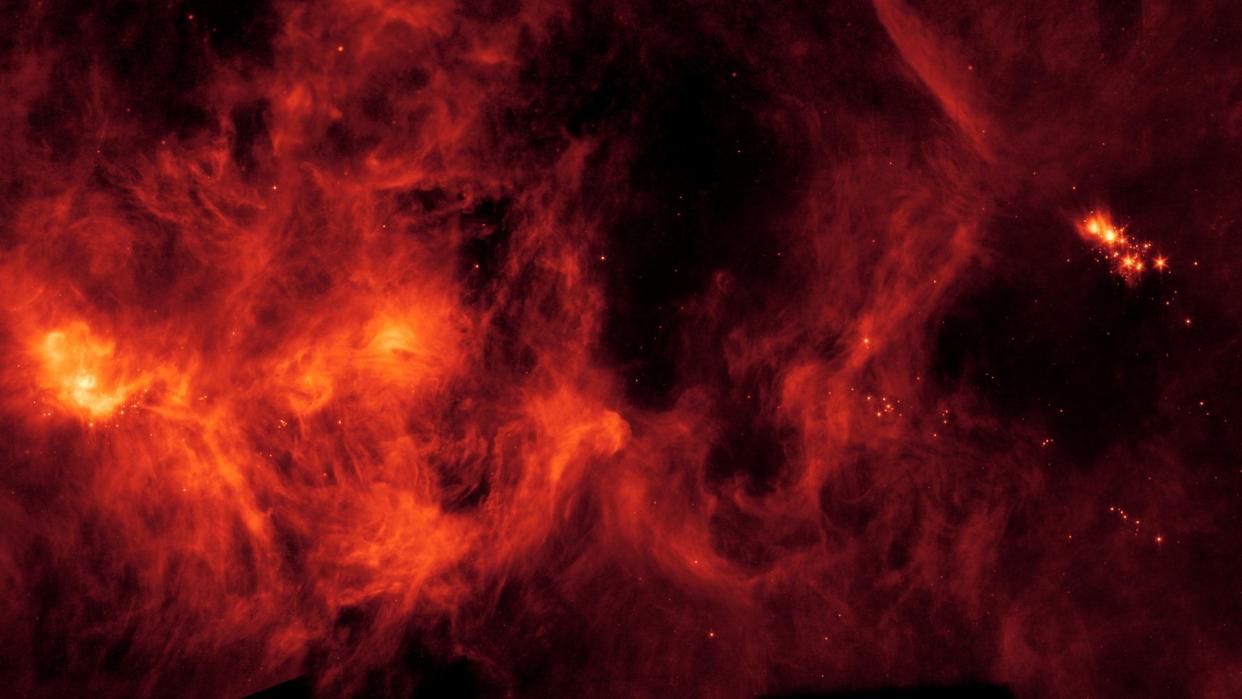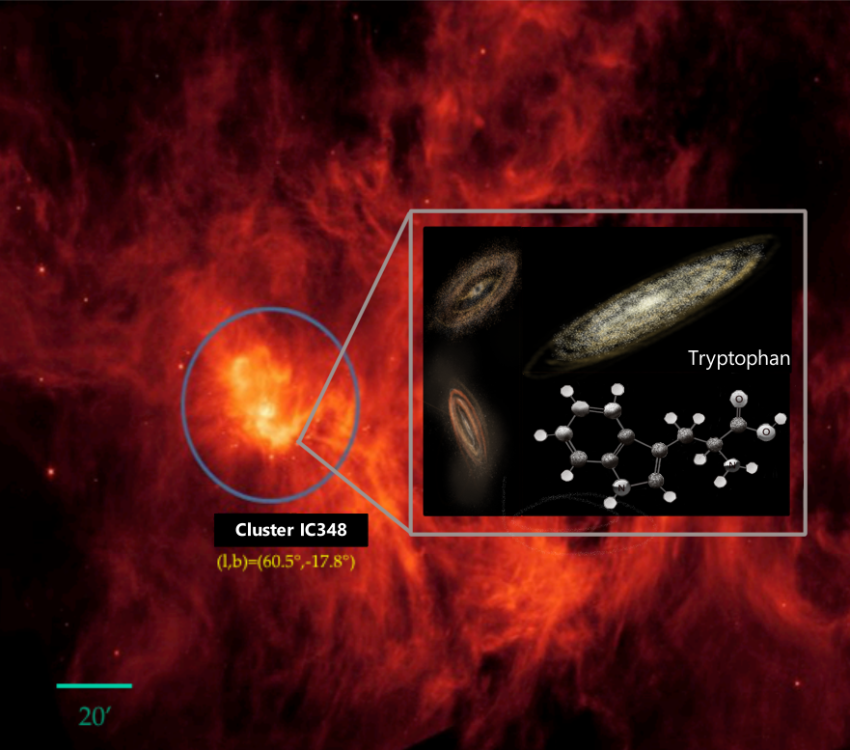Key ingredient for life found in star-birthing cloud just 1,000 light-years from Earth

Astronomers have discovered high amounts of the amino acid tryptophan in interstellar material throughout a nearby star-birthing region of space. Tryptophan is one of 20 amino acids responsible for forming key proteins essential for life on Earth.
The fingerprints of this amino acid, in the form of unique spectral lines, were spotted in data collected by the Spitzer Space Telescope in infrared light from the star-forming IC348 star system. The discovery could indicate that protein-building amino acids often found in meteorites can be present in the gas and dust, which collapse to birth planetary systems around young stars.
"The evidence for tryptophan in the Perseus molecular complex should encourage additional efforts to identify other amino acids in this region and in other star-forming regions," the scientists behind the discovery, Instituto de Astrofísica de Canarias (IAC) researcher Susana Iglesias-Groth, said in a statement. "It is a very exciting possibility that the building blocks of proteins are widely present in the gas from which stars and planets form — it may be key for the development of life in exoplanetary systems."
Related: Ingredients for life discovered in Perseus molecular cloud in space 1,000 light-years from Earth
IC348 is part of the Perseus Molecular Complex, a huge cloud of gas and dust that contains material with a mass equivalent to 10,000 suns. The gas cloud is estimated to be reasonably young in cosmic terms at just 2–3 million years old, especially compared to, say, our 4.5 billion-year-old solar system.
At just around 1,000 light-years from Earth, IC348 is one of the closest star-forming regions to our planet. Though IC348 is usually invisible to the naked eye, the region shines brightly in infrared light. Analyzing these infrared emissions from the region, Iglesias-Groth found 20 emission lines of the molecule tryptophan.
This kind of analysis of light, called spectroscopy, reveals the chemical composition of molecular clouds, interstellar gas, stars and the atmospheres of planets because different chemical elements and compounds absorb and emit light at characteristic wavelengths. This means they leave their "fingerprint" on the light that passes through them, fingerprints that space telescopes can uncover.
The tryptophan was found to have a temperature of around 44 degrees Fahrenheit (around 7 degrees Celsius).

IC348 has the right "soup" for life
Iglesias-Groth had previously used spectrography and Spitzer to detect other important biological precursors to life in the star system IC348. In 2019 she discovered complex carbon molecules, carbon-60 or "fullerenes," that can act as the building blocks for the key molecules of life in the region.
Earlier this year, Iglesias-Groth discovered a "soup" of complex molecules in the star cluster, including molecular hydrogen (H2), hydroxyl (OH), water (H2O), carbon dioxide (CO2), and ammonia (NH3). This was in addition to several carbon-based molecules that could play a role in forming more complex hydrocarbons and prebiotic molecules, including hydrogen cyanide (HCN), ethane (C2H6), hexatrine (C6H2), and benzene (C6H6).
"IC348 seems to be very rich and diverse in its molecular content," Iglesias-Gorth said in a statement earlier this year. "The novelty is that we see the molecules in the diffuse gas from which stars and protoplanetary discs are forming."
The significance of these prebiotic molecules in these clouds of gas and dust is that it makes it possible that young planets, as they form, could accrete these molecules to their surfaces and potentially support the development of life. Alternatively, these molecules could be sealed up in asteroids which are created from the material left over when planets are born and later delivered to other planets' surfaces during the turbulent early years of planetary systems via impacts.
Whatever the delivery mechanism, once on the planet surfaces, these molecules could engage in the chemical processes that form proteins and eventually lead to the development of life.
RELATED STORIES:
— Will Artemis astronauts look for life on the moon?
— 2 'super-Earth' exoplanets spotted in habitable zone of nearby star
— James Webb Space Telescope spies earliest complex organic molecules in the universe
Iglesias-Groth now intends to follow up their Spitzer-based research with observations made with the James Webb Space Telescope (JWST).
"The spectroscopic capacity of the JWST could provide details about the spatial distribution of all these molecules and extend the present search to others which are more complex, giving higher sensitivity and resolution which are essential to confirm the very probable presence of amino acids in the gas in this and in other star-forming regions," Iglesias-Groth said earlier this year.
The research led by Iglesias-Groth is published in the journal Monthly Notices of the Royal Astronomical Society.

